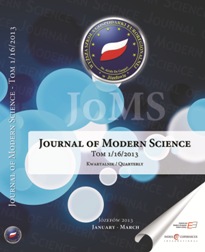Investments in CHP gas plants for district heating in Poland.
Investments in CHP gas plants for district heating in Poland.
Author(s): Jan A. Błaszczyk, Roman Domański, Arkadiusz Węglarz, Adam Dominiak, Paweł M. Błaszczyk, Adam Rajewski, Marcin BugajSubject(s): Economy, Energy and Environmental Studies, EU-Legislation
Published by: Wydawnictwo Akademii Nauk Stosowanych WSGE im. A. De Gasperi w Józefowie
Keywords: energy security; polish gas system; district heating in Poland; energy efficient economy; CHP;
Summary/Abstract: New European Union (EU) strategy accepted in march 2007 focuses on limiting the industrial impact on the climate change and increasing EU’s energy security. One of the main concepts is to reduce the carbon emission and increase the energy efficient economy. This is why the EU has set a series of guidelines for the energy sector which must be met by 2020 - 20% reduction of greenhouse gas emissions below 1990s levels, 20% energy coming from renewable resources and 20% reduction in primary energy use compared with projected levels, to be achieved by improving energy efficiency [1]. EU has also set the objective of further reducing greenhouse gas emissions by 80–95% by 2050 compared to the 1990s levels, as described in the “Roadmap 2050” [2]. Since the early 1990s in Poland, energy efficiency has attracted increasing attention due to world and EU regulations and increasing fossil fuel prices. Sustainable development of Polish heat and power sectors require introducing new high efficient technologies based on different fuels, since coal is the dominant energy source in Poland. The combined heat and power generation – CHP is energy-efficient solution and reduces CO2 emissions. In comparison with the generation of heat and power in separate facilities, efficiency improvements between 10% and 40% can be observed (Madlener and Schmid, 2003) [3]. With applications in industrial processes, district heating and micro sources, cogeneration is recognized to be a “proven, reliable and cost-effective” (International Energy Agency report (Kerr, 2008) [4]) energy option, “deployable in near term” (Oak Ridge National Lab report (Shipley et al., 2008) [5]). An example of policies supporting the CHP sector can be found in the European Union CHP Directive (Directive 2004/8/EC, 2004) [6]. This framework promoting CHP growth has since been adopted in many member state national laws including the Polish market (Energy Strategy for Poland till 2030– Polityka Energetyczna Polski do 2030) [7]. Poland aims to double the share of electricity produced in cogeneration systems before 2020 (in comparison with 2006) and introduce cogeneration in every district heating system in Poland before 2030. In this paper we focus on investment parameters optimization and fulfilling requirements for investment in CHP district heating plants. This article provides basic information on regulations and technical aspects of CHP plant introduction in Polish district heating systems.
Journal: Journal of Modern Science
- Issue Year: 18/2013
- Issue No: 3
- Page Range: 339-352
- Page Count: 14
- Language: English

